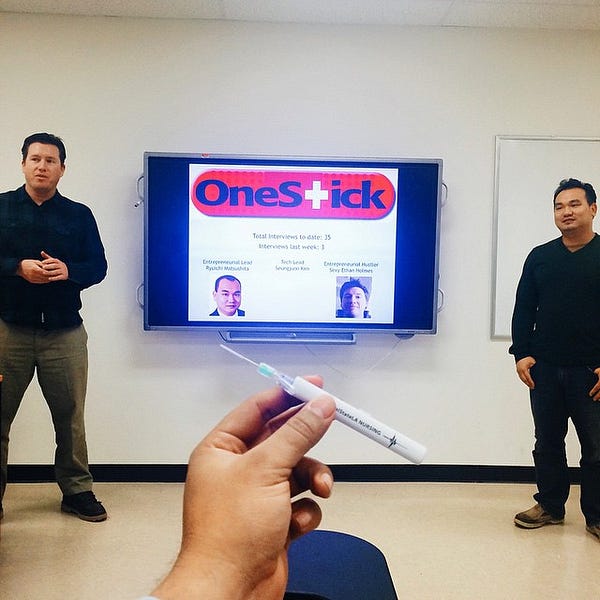..How Silicon Valley is Helping To Change it
Having launched some successful businesses and not so successful ones (but great tax write offs) over the last 12 years, I’ve been through the broad scope of real world scenarios that has molded and educated me into the businessman I am today. Although given that point, when I decided to attend college in Los Angeles several years back, I was deeply interested in majoring in entrepreneurship to help me become a better businessman. So as school began for me, I enrolled in the option, attended classes, sat in lectures, and wrote a lot of business plans that were, in my opinion, helpful to me as a student yet not really helpful to me as a entrepreneurial student.
Frustrated, I felt like I had to supplement my education to help fill the gap between the theoretical learning I was getting in class and the practical learning I needed to experience outside of it. Together with some of my friends we read as many new books on innovation, technology, startups, and design thinking that we could get. We designed a year long startup project in conjunction with entrepreneur professors, acting as our advisers, to learn how to build an income generating web business from scratch. We even went as far as to create a fellowship program in order to give us access to entrepreneurs, tech innovators, and startup ecosystems in Silicon Valley to further expand our minds. Most of the things we did were all done without permission, but with a lot of faculty encouragement.
Looking back at it all, in retrospect, I can clearly see that there seems to be an inherent flaw in the way entrepreneurship education is taught at the collegiate level because it is based on a model that was not meant for starting companies, but designed to teach students how to run them.
See, traditional entrepreneurial education, as we currently know it, was developed in the 50s at Ivy League universities to fit the “Case method” style of teaching. This method was really designed to teach the next generation of consultants and executives of already existing companies, not the founders of a highly scalable startups. This is a big problem because it seems logical to assume that the same management methods taught at the University, meant for existing companies, would apply to newer startup ventures. The truth, as we now know, is far removed from that reality because startups operate in a very different way.
Large companies are mostly in execution mode. They already have established customers who buy their product / services through an existing channel and in a way that generates ongoing revenues. Ultimately, large companies are usually looking to increase market share in their segment / niche to maximize profits for their shareholders. Startups, on the other hand, are really just temporary teams formed around an idea who are searching for a business model that they can duplicate and scale. Startups usually don’t know who their customer is, what product / service they’re selling, how they make money, or how they acquire their customers. This simple fact alone, is what distinguishes the difference between a startup and an existing organization. So knowing this, how can universities teach the same management methods used at large, existing organizations and expect them to still apply to today’s emerging startup scene.
Take a minute to think about your childhood years growing up and see if you can remember the first time you learned how to play Basketball. Were you taught the foundations of the game like how to dribble, pass, or shoot in a classroom? The truth of the matter is you can’t really teach Basketball in a classroom. I mean you can probably teach a basic understanding of it, but to really get solid on the game itself you have to go play on a court. It’s only when you play the game that you learn how much pressure to put on the ball before you shoot it, exactly at what speed to approach the basket in order to make a lay-up, and how to dribble a ball in between you legs. The same can be said about entrepreneurship.
I mean think about it, you can get an entry level understanding of what starting a company is like while in a classroom, but can you really understand how to take an idea to market by simply listening to a lecture? Missing from that lecture would be all those things that you learn while starting a company, things like what are your customers willing to pay for, what to charge for your product/service, or what the best method to acquire new customers is? How does sitting in a classroom listening to a lecture from a scholar about business plans really prepare you for that?
I’ve personally seen the light this past year and I’ll be the first to say that entrepreneurship education is evolving into something amazing right now. Over the past 5–7 years, there has been a movement originating in Silicon Valley developed by entrepreneurial tech founders that has redeveloped what entrepreneurship education looks like in the classroom. These startup founders developed a way to teach a 10-week course to students that applies learning Customer Development, Lean Methodology, and Business Model Development in order to test assumptions concerning their business model with real customers. In these classes, gone are the days where students spent their time memorizing facts in a book only to regurgitate them later in a test or final presentation. Now, the main focus is “getting out of the building” and going to talk to customers weekly in order to validate their business model hypothesis’s to get to product-market fit faster and with less waste.
This new approach replaces the need for traditional classroom milestone metrics of learning, like a mid-term or final exam, and instead focuses on student learning outcomes. Based on the curriculum, students work in teams to present every week what they learned talking to real customers and how it relates to their business model hypothesis’s. Every week they receive instant feedback and guidance from class facilitators who have gone through the process themselves and can offer some clarity on the strategy. Along with the hands-on approach to teaching this class, facilitators lecture on one portion of the business model canvas every week. This radical new way to teach entrepreneurship is all about giving students the reigns to their learning, the proper guidance from experts, and giving them the real world experience they need to understand what its like to launch a business.

As someone who went through the program through theNational Science Foundation’s Innovation Corp and who now teaches it at my alma matter in Los Angeles I can very openly say that I’ve seen it work first hand better than anything I’ve ever experienced before. As an example, one of my students recently created, in a weekend, a prototype IV Catheter medical device that reads vital signs and delivers it, in real time, via bluetooth to important stakeholders. This amazing initial product started with a vague idea and was developed over 10 weeks after speaking to many people to see what problems were being faced by their potential customer. Through the course of the class they went through multiple iterations, pivots and ultimately found that what hospitals are willing to pay for is a product that can deliver real time data which can save more lives, increase nurse productivity, and decrease malpractice litigation.
Under traditional entrepreneurial educational, these findings might have never happened. In fact, what most likely would have occurred is the students would have pitched their original idea, been asked to create a business plan to pitch at the end of class, and present their plan with a slide deck in a final pitch. I’ve heard from countless students that this method is shattering to their self-esteem because a lot of times this process kills their idea before it ever has a chance to take shape. The reason why is because many professors who teach this method are not the intended customer, they aren’t grading students on the validity on their idea, they’re grading them on the strength of their plan. This unfortunately, many times, destroys any potential progress that a student could achieve because students feel like, “well my professor doesn’t think my idea is good or worth an “A” grade, so I must have a stupid idea”.
Now, don’t get me wrong, I’m not saying this is the professors intention, I’m just saying that there is a better way to do this. I mean would you ask a student who was interested in learning how to play basketball to write a paper on how to shoot a perfect 3-pointer without ever having them touch a basketball or enter a court to play? Of course not!
The fantastic news is that because the desire to start a business amongst students is increasing, universities are seeing this radical methodology as an interesting way to attract incoming students to their colleges and separate themselves apart from other programs. As this continues to happen and more school funding becomes available, I can definitely see entrepreneurial education continuing to evolve. The only question then becomes, as more schools adopt this, what kind of amazing and crazy solutions will students develop to tackle the worlds most difficult problems?
Seriously, Thank you so much for reading this! If you found any of this article information or useful please click the recommend button below, thank you ☺
Also don’t hesitate to hit me up on twitter 😉
Check out other great articles from Latinos and Latinas in business







